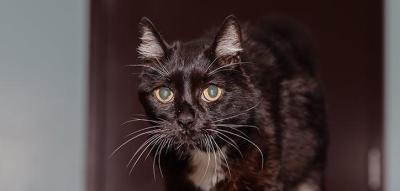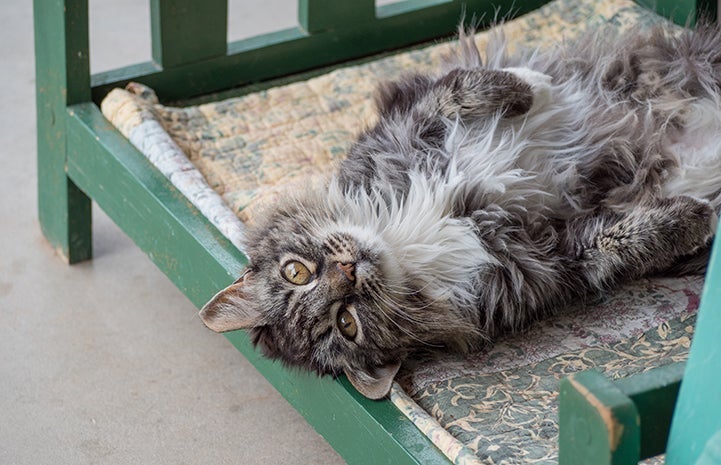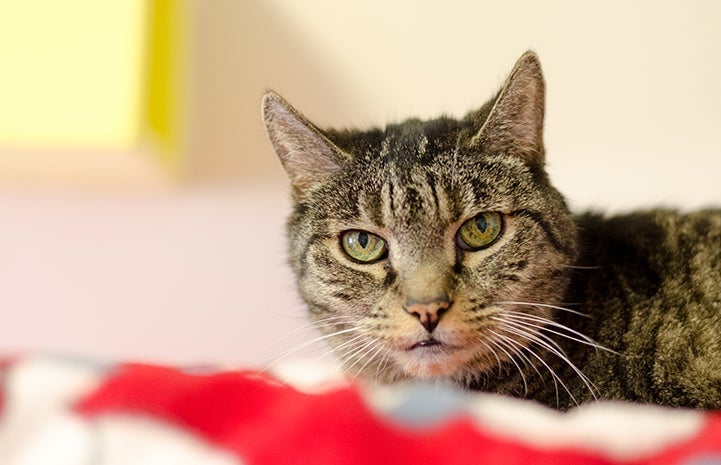
Diabetes in Cats: Types, Treatment and Prognosis
Diabetes mellitus in cats is an endocrine disorder caused by decreased production of the hormone insulin by the pancreas. The endocrine system is the collection of glands that produce hormones that regulate metabolism, growth and development, tissue function, sexual function, reproduction and sleep.
Insulin is necessary for the cat’s body to utilize the food consumed. If it is not present, or present in decreased amounts, the body will begin to “starve” and will abnormally start to break down muscle and fat. As a result, the cat will eat a large amount of food, but continue to lose weight. And the food consumed, which is broken down into sugar called glucose, begins to build up in the bloodstream, causing high blood sugar (hyperglycemia). This elevated level of glucose in the blood leads to excessive urination and thirst.
Insulin-dependent and non-insulin-dependent diabetes in cats
The four classic signs of diabetes are ravenous appetite, weight loss, increased urination and increased water consumption. There are two different types of diabetes in cats: insulin-dependent and non-insulin-dependent. About 75 percent of cats affected have the insulin-dependent type and will require insulin injections.
Diabetes occurs most often in middle-aged to older cats, with male cats more prone to it than females. The exact cause of the disease in cats is not known, although obesity is the major predisposing condition and other conditions, such as chronic pancreatitis or other hormonal diseases, have been associated with it.

What if cat diabetes is left untreated?
If not treated promptly, diabetes can severely affect the cat’s health, cause damage to organs such as the liver, and cause severe weakness and neuropathy, a condition that affects the peripheral nerves. A dangerous, sometimes fatal condition called ketoacidosis may develop, indicated by loss of appetite, vomiting, diarrhea, lethargy, weakness, dehydration and breathing abnormalities. If the cat has reached this level of disease, intensive medical care is required.
Home starts with you
Treatment for diabetic cats
Treatment is usually in the form of a special diet and insulin injections given once or twice daily under the skin. The type of insulin used may be based on your cat’s response to it. Your veterinarian will work closely with you and your cat to determine the correct insulin for your cat. Sometimes oral medications can be used, but they are generally not as effective and work best for cats who are non-insulin-dependent.
Giving your cat insulin injections
Learning to give insulin injections may seem daunting initially, but most people become quite adept after receiving instruction from their veterinarian. Many cats don’t seem to even notice the injections; the needle used is extremely tiny and cats have loose skin, which means several anatomic areas can be used for injections.
Diet and nutrition for diabetic cats
Some cats respond best to a diet high in fiber and complex carbohydrates, which is believed to help control blood sugar levels after eating. Other cats respond well to carbohydrate-restricted diets. Each diabetic cat is an individual, and each responds differently to treatment.
Are there any natural or holistic treatments for cat diabetes?
There are no effective “holistic” treatments for diabetes in cats. Proper diet and exercise to achieve weight loss is more a means of prevention than a treatment. In rare cases, cats can be maintained on special diets alone, but this should only be done if their diabetes is very mild and their blood sugar levels can be monitored frequently.

Insulin requirements and blood glucose testing for diabetic cats
Although diabetes in cats is generally not curable, some cats will no longer be diabetic after a time and will go into “remission.” Also, sometimes insulin requirements will increase or decrease over time, especially if the cat’s weight changes. Therefore, it is important to monitor your cat after starting on insulin at regular intervals for the remainder of his life, to make sure he is regulated on the current course of treatment. Seek veterinary treatment if your cat is acting ill or showing the clinical signs of diabetes that you initially noticed. Illness can cause disruption in response to the current insulin dosage, so assessment by your vet is necessary.
Many people also learn to measure their cat’s blood glucose at home, either with a small meter called a glucometer that uses a drop of blood from the cat’s ear tip, or via a special kind of litter that helps test if glucose is present in the cat’s urine. Some folks simply monitor food intake and urine output, in conjunction with the overall attitude of the cat, to determine if he is maintaining diabetic control.
Costs of treating cat diabetes and prognosis
Cost can be a factor in caring for a diabetic cat. Initial lab tests and supplies, including insulin and a prescription diet, can be expensive. The actual costs can vary depending on how much time it takes for the cat to regulate to the insulin treatment and how many serial blood glucose checks (called blood glucose curves) are necessary. There are specialized lab tests that can be run periodically to determine blood sugar control, and these tests can be costly.
The prognosis for diabetic cats varies. If the diabetes resulted from obesity, it is likely to improve a great deal (or even resolve) once the cat's weight is normalized. If obesity or some other disorder is not a factor, the diabetes probably will not go away. However, it can be successfully managed. The complications that affect human diabetics (kidney, blood vessel and coronary artery disease) are not commonly seen in diabetic cats. With proper treatment and home care to maintain control of blood sugar, a diabetic cat can live many healthy years.
